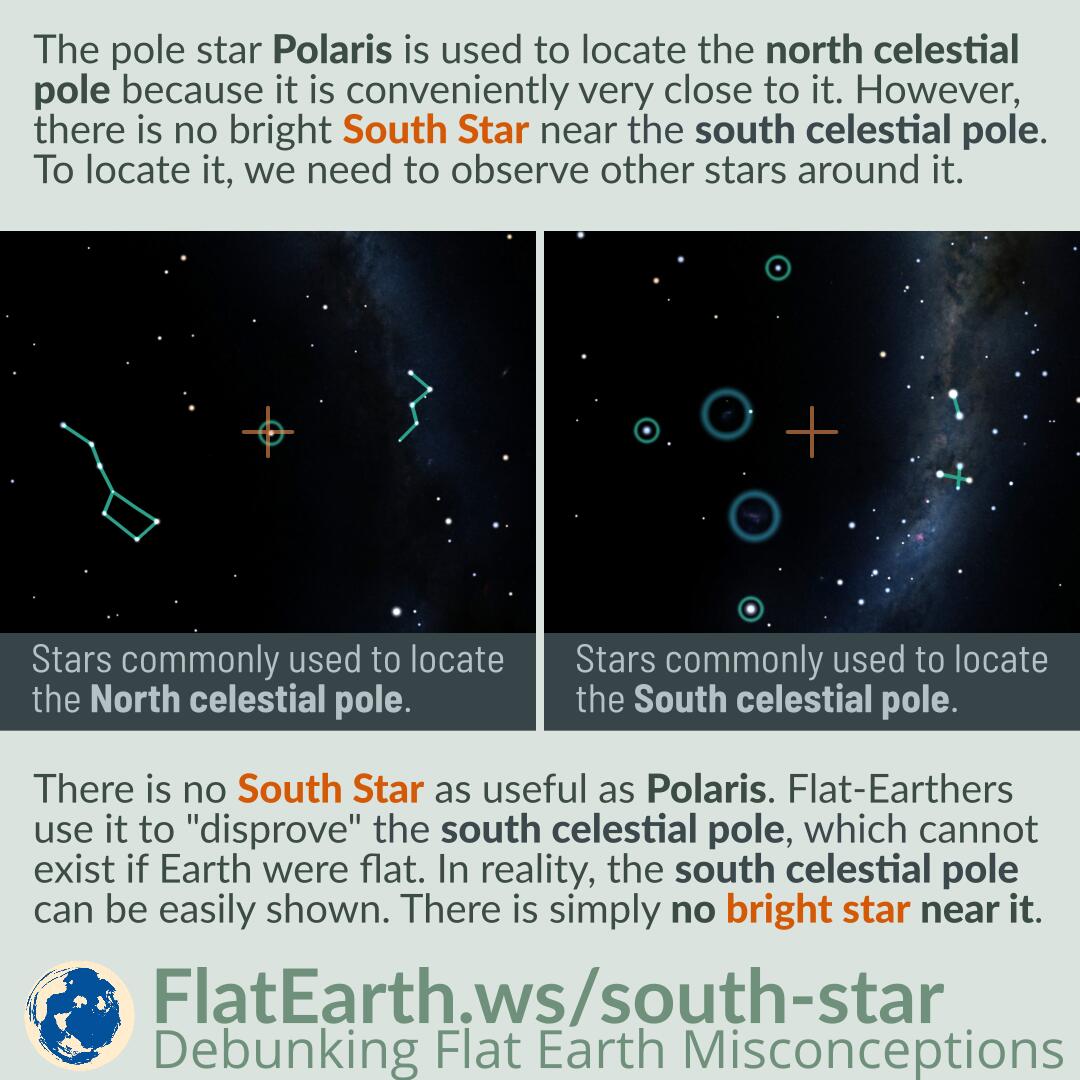The pole star Polaris is used to locate the position of the north celestial pole because it is a bright star that is conveniently located very close to it. However, there is no corresponding bright South Star near the south celestial pole. To locate the south celestial pole, we need to observe stars around it.
There is no South Star as useful as Polaris in the north. Flat-Earthers use it to “disprove” the existence of the south celestial pole, which cannot possibly exist if Earth were flat. In reality, the south celestial pole can be easily shown and located. There is simply no bright star near it.
To locate the north celestial pole, we can simply use Polaris because it is a bright star and very close to the North celestial pole. If Polaris is not visible because of the weather, we can use the Big Dipper or Cassiopeia to approximate the location.
On the other hand, there is no bright star near the south celestial pole. The star Sigma Octantis is close to the south celestial pole, but with a magnitude of only 5.5, it is barely visible on a clear night. We have no choice but to use bright stars around the south celestial pole to locate it. The Southern Cross and the two Pointer Stars (Alpha & Beta Centauri) are common stars to locate it. Other methods include using Canopus, Achernar, and Sirius, as well as the two Magellanic Clouds, if the sky is clear enough.
Just because there is no bright star close to the south celestial pole, it does not mean the south celestial pole does not exist. We can easily observe that stars are in an apparent motion around a specific point in the southern sky. We call that point the south celestial pole.
References
- Celestial pole – Wikipedia


